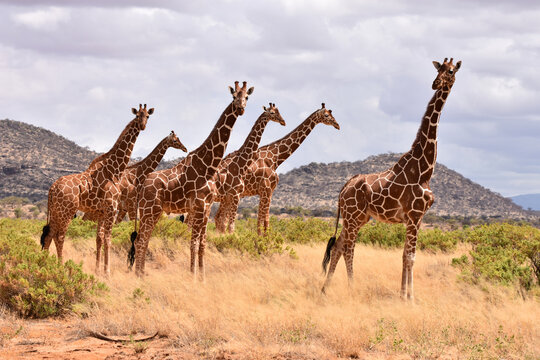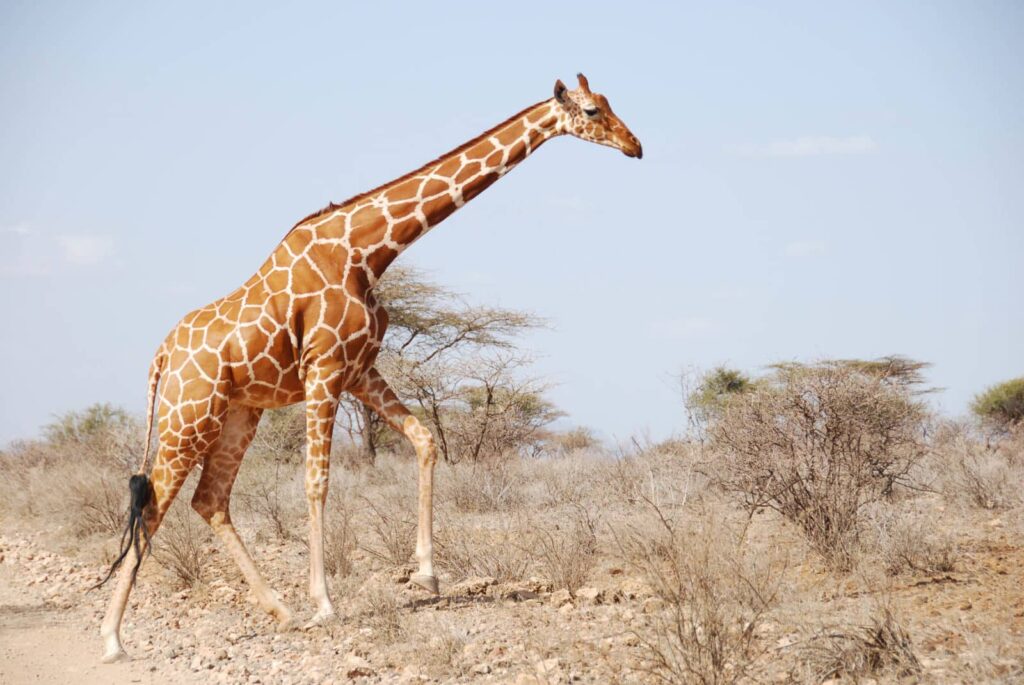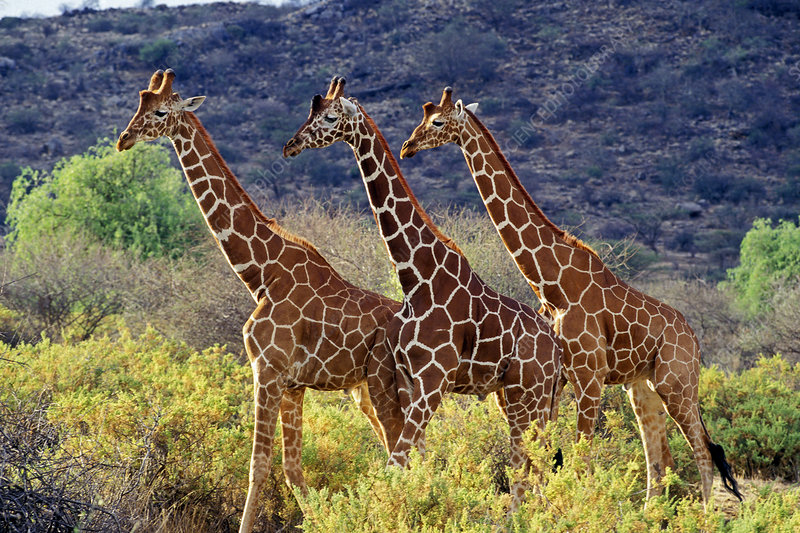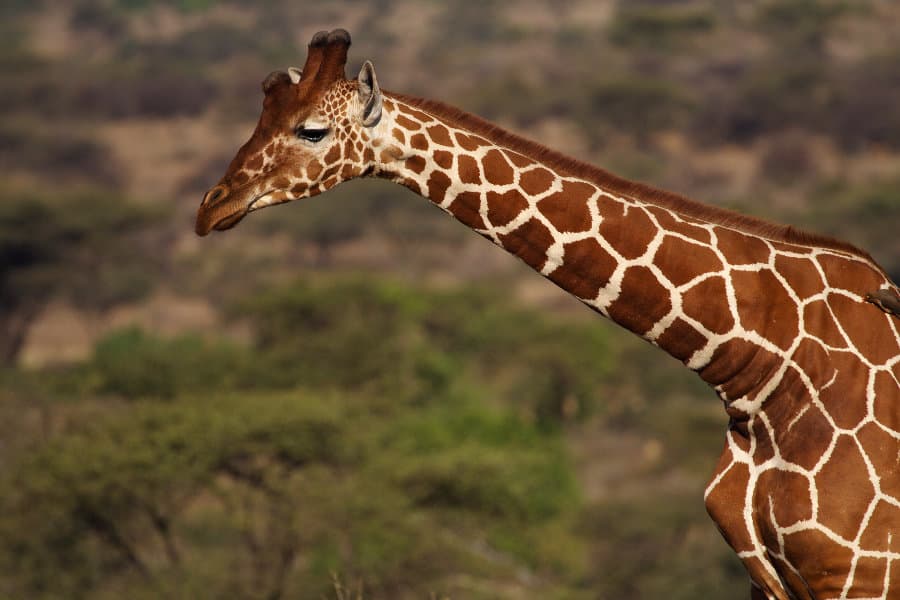There are a wide number of animal species who are categorized as being endangered day by day and it is quite crucial in order to look into certain ways to keep their species alive and protected by using different methods of awareness.

Animals such as Reticulated giraffe are also one among this category and proper care should be given to the remaining numbers available within them in order for them to be healthy and living and also for them to breed more in order to increase their numbers widely so as to get them off the endangered lists.
Reticulated giraffe facts
Knowing certain astonishing facts about creatures such as Reticulated giraffe will help pique the public’s interest in them and are as follows:
- The reticulated giraffe is also commonly known as Somali giraffe.
- These species are often from a breed that is native to Somalia.
- These species are also found in Northern Kenya.
- They often tend to interbreed with other category giraffes if their population is found to be low in the wild.
- They are also one of the most commonly found giraffes found in zoos across the world.
- As per record, there are about 8500 of them in the wild.
- They were given their names by a British zoologist named William Edward de Winton which occurred in 1899.
- Their scientific name is mentioned as Giraffa camelopardalis reticulata.
 Reticulated giraffe genus
Reticulated giraffe genus
The species of Reticulated giraffe is categorized under the genus of Giraffa and under the family of Giraffidae. The outer coat of these giraffes consists of large, polygonal, liver-colored spots which are found to be outlined by a series of bright-white lines on their body all throughout.
At times this kind of design blocks may seem to appear deep red in color and be present up until the leg part of its body in total. The organizations only recognize one main species of giraffe which collectively contains 9 subspecies in them which was not categorized in the earlier times as in 1758. Later as the species were all differently identified and regrouped again to categories which are being recognized as such even today.
Reticulated giraffe structure
Most of the giraffes which are male often grow up to 18 feet tall and has a weight that varies between 2400 and 4250 pounds. The females of the same category are often found to have about 17 feet in height and weigh between 1540 and 2600 pounds with variations from that of the male category.
As the neck part of the giraffes are collectively long, they contribute mainly to the length of their body in total by being about 8 feet in length and weigh about 500 pounds on average.
The anatomy which is involved in their body is very interesting as they are said to have a heart that weighs about 25 pounds and also has a stomach that contains 4 chambers altogether. Another fun fact about their body design is that when they bend down the brains cuts off the blood flow through their necks.
These long necks of theirs contain seven vertebrae identical to that in human beings but the length of each of it is different from that of humans and that is the reason for their extremely long necks. They have smart brains that will quickly identify their actions such as eating or bending down to drink water and hence relatively adjust the blood flow so that their blood pressure is regulated without causing any harm to their body.
Reticulated giraffe habitat
These Giraffes were originally often found in and around the areas of Northeast Africa and are currently found to be accommodated in Southern Ethiopia and other areas of northern Kenya as well. They often enjoy having their habitats in areas which are of savannas and woodlands wherein a large quantity of moisture and water is available. They also prefer to be around seasonal floodplains as well as rainforests in order to make themselves comfortable as well.
As the species are being categorized under the endangered category a large number of measures are being taken by government organizations in order to get their population out of concern. Institutions such as San Diego Zoo is performing certain projects which accommodate certain local Kenyans in order to keep check of the animals in their territory through trail cameras and other equipment.
Reticulated giraffe Diet
As they are large creatures they feed on an adequate amount of food such as leaves, twigs, and barks of certain trees but they also include leaves from acacia trees which makes them stand out the most from others. As these acacia tree leaves have thorns on them, many animals collectively avoid them but since giraffes are quipped with thick lips and tongue they have no trouble in consuming such leaves as part of their main diet.
They will definitely get enough availability when it comes to food as they can always make use of their height in order to access high trees which are normally inaccessible to any other animal on the ground. This would get rid of any competition they might have had to face if it wasn’t for their height which acts as a huge advantage in areas as such.
Some other tree leaves that the giraffe family normally feast on are terminalia and commiphora trees. The zoo facility which often accommodates them gives them a mixture of sweet potatoes, alfalfa, apples, grains, carrots, and vegetables.
As their main diet consists of leaves which will also help them in increasing and maintaining the water content in their body it is often said that they don’t usually drink water separately and can even go without water for a few days without any issue.
Reticulated giraffe Behavior
The giraffes are often found to be in groups which may consist of up to 40 members of lesser in number and can leave the group due to their individual needs and also rejoin back later without any issue among others in the group. During the time of mating, females are often found to be highly attached to males of the group in order to establish the interaction between them.
Although they are not territorial they tend to show their true colors at the time of breeding. Birds are often seen to be sitting closer to the tail part of the giraffe in order to get rid of any pests or insects which are disturbing the animal and hence plays a role in keeping them healthy.
Reticulated giraffe Reproduction
When it comes to being mature females often mature in about 3-4 years whereas the males may take up to 7-8 years for reaching their maturity. There are certain neck fights that are often initiated in order to gain a female mate for them where they entangle their necks together to see who would stand out the longest and who would give in first. Mostly the males with longer necks often tend to win the fight and hence get the female giraffe.
The mother often carries the baby for about 15 months before giving birth to a single calf. And the birth of the calf often is done during the dry season whereas the mating happens mostly in rainy seasons.
Some Frequently asked questions about Reticulated giraffes –
-
How tall can Reticulated giraffes grow?
Reticulated giraffes are the tallest land mammals and can reach heights of up to 18 feet (5.5 meters) when fully grown. -
What do Reticulated giraffes eat?
Reticulated giraffes are herbivores and primarily feed on leaves, shoots, and fruits from acacia trees, using their long necks and prehensile tongues to reach high branches. -
How do Reticulated giraffes defend themselves?
Reticulated giraffes have several defense mechanisms, including their height, which allows them to spot predators from a distance, and their powerful kicks, which they can deliver with their long and strong legs. -
Are Reticulated giraffes endangered?
Reticulated giraffes are currently listed as a vulnerable species, facing threats such as habitat loss, poaching, and human-wildlife conflict, making conservation efforts crucial for their survival.
-
How do Reticulated giraffes communicate?
Reticulated giraffes communicate through a variety of behaviors, including necking (combat between males), vocalizations such as low moans and snorts, and visual cues such as posturing and body language. -
How long do Reticulated giraffes live in the wild?
Reticulated giraffes typically have a lifespan of around 20 to 25 years in the wild, although some individuals have been known to live longer in captivity. -
Do Reticulated giraffes migrate?
Reticulated giraffes are not known to undertake long-distance migrations. They generally move within their home ranges in search of food and water, but their movements are not as extensive as some other migratory species. -
What are the threats to Reticulated giraffe populations?
The main threats to Reticulated giraffes include habitat loss due to human activities, illegal hunting for bushmeat and trophies, and conflict with humans and livestock, as they compete for resources in their shrinking habitats. -
How do Reticulated giraffes reproduce?
Female Reticulated giraffes give birth to a single calf after a gestation period of around 14 to 15 months. The calves are born while the mother is standing, and they are capable of standing and walking within hours of birth.
The world of Reticulated giraffes is a captivating one, filled with incredible adaptations, unique behaviors, and ongoing conservation efforts. By understanding their habitat, behavior, diet, and conservation status, we can appreciate and contribute to the conservation of these majestic creatures. Let us celebrate and protect the Reticulated giraffe, ensuring their continued presence on our planet for generations to come.

